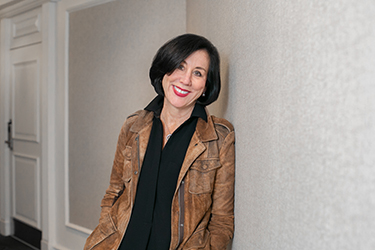A shortage of skilled workers is an opportunity for manufacturers to empower a new generation to experiment and innovate in the workplace.
By Pat Hume, CEO at Canvas GFX
Manufacturing businesses across the U.S. need new blood in the workforce, and fast. Employers are feeling the impact of the shortage of skilled workers during the pandemic, compounded by the continued exodus of baby boomers from the workforce. Pew Research reports 3.2 million more baby boomers retired in Q3 2020 than in 2019, and the manufacturing industry is on track to reach 2.1 million unfilled jobs by 2030.
This generational shift, and the skills shortage it brings, threatens a loss of institutional knowledge and a drop in productivity. Combine that with increasingly transactional relationships with customers and there is a real risk to customer retention and revenue.
This may well feel like a crisis – but it’s also an opportunity. It has created a moment for manufacturing businesses to reassess the “this is how it’s always been done” mentality and empower a new generation of teams to make positive change.
So how do we appeal to this new wave of talent? Social responsibility, purpose, diversity, work-life balance, and flexibility are all clearly more important to young workers now than they were in the past. These are important, but they are ‘soft’ corporate issues that are more about the business than they are about the employees’ working experience.
I would argue that the technologies to which new employees are exposed, and the extent to which they are empowered to innovate with those technologies, can be just as compelling as a strong brand reputation. Studies suggest that two-thirds of millennials and their younger Gen Z colleagues consider an organization’s embrace of technology and innovation as an important factor when choosing an employer. These studies repeatedly highlight the desire for transferable skills and access to cutting-edge technologies which translate into currency in the job market.
At Canvas, we have manufacturing customers of all sizes. Truth be told, some of the practices we see in areas including documentation, communication and collaboration can leave you scratching your head. You would never design these processes today, but inertia is a powerful thing; particularly in larger, older organizations. Perhaps a new generation of leaders in manufacturing could offer an antidote to that inertia.
The contrast with what we see among our start-up customers is stark. At these organizations, empowerment, inquisitiveness, and openness to new tech are almost foundational values. The insight, the confidence, and the capacity to execute on a strategy that says, “I think we can do this better,” is highly prized. These are people who import the technological practices of their personal and social lives into the workplace. They want to work as they live; communicating and collaborating quickly and effectively.
Not that youth makes an organization impervious to process-related problems. Rapid growth can lead to rapidly escalating challenges. We have one customer from the drone manufacturing space who discovered fragmentation, inefficiency, and obsolescence in documentation across the organization had taken hold as progress had accelerated. This reflected challenges that we have seen often in far more established organizations.
Indeed, what marks the most effective companies out is not their immunity to challenges but the speed and conviction with which those challenges are addressed and overcome. This customer decided to look at the problem holistically rather than in terms of departmental silos. They wanted to make sure the entire company moved in unison to optimize critical communication and collaboration processes. Even for a young company that is a significant change and required a level of dynamism that prizes opportunity over risk.
The change they introduced was making complex data including 3D CAD models – normally the strict preserve of engineering teams – available for more departments to leverage as a rich visual communication asset. They reasoned that, by empowering more teams, they would reduce the burden on engineers who were being distracted by frequent requests for model screenshots for use in sales or marketing presentations. New skills, new experiences, new workflows: giving people the chance to do something different can drive improvements on all sides.
The desire to define themselves by doing things differently is a hallmark of every generation. It’s true in music and manufacturing, in fashion and fabrication. Give the new wave of employees coming into the workforce the best technology and support them in their attempts to experiment and innovate and you will stand the best chance of bringing the brightest talent through your doors.

About Pat Hume
A leader whose career in software and high tech spans four decades, including 20 years at C-level, Patricia Hume is responsible for the creation and execution of the Canvas strategic vision. With a wealth of cross-functional experience and deep operational expertise across large companies and microcaps, Patricia specializes in driving sustained growth and high-impact turnarounds.
Prior to joining Canvas, Patricia was chief operations officer at iPass, Inc., where she led global customer-facing activities, including sales, marketing, product, business development, strategic partnerships, operations, and customer support until the company’s acquisition in February 2019. She has also served as chief revenue officer at Convio, senior vice president of Global Indirect Channels at SAP AG, group vice president of Avaya’s SMB Division, and CEO and president of VerticalNet Markets. She held numerous senior management positions during her 18-year service with IBM and Lotus. A passionate advocate for diversity in tech, Patricia also volunteers for a non-profit organization focused on serving disadvantaged communities in Boston.
In this episode, I sat down with Beejan Giga, Director | Partner and Caleb Emerson, Senior Results Manager at Carpedia International. We discussed the insights behind their recent Industry Today article, “Thinking Three Moves Ahead” and together we explored how manufacturers can plan more strategically, align with their suppliers, and build the operational discipline needed to support intentional, sustainable growth. It was a conversation packed with practical perspectives on navigating a fast-changing industry landscape.